Linden is a small town and village west of Dodgeville and Mineral Point (the village sits within the town). Located within the homelands of the Ho-Chunk, the Miami, the Sauk and Fox, and the Kickapoo, Linden’s main industries have been mining and agricultural pursuits.
Thanks to the Mineral Point Historical Society and Mineral Point Library Archives for these images! Interested in getting involved with Linden history? Contact the Linden Historical Society – they need your help!
All images are from the Mineral Point Historical Society Digital Collections
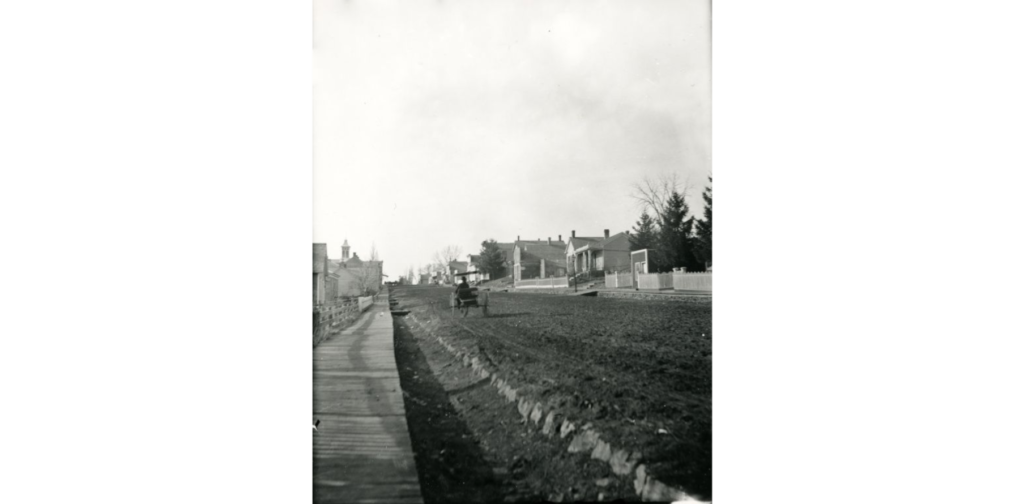
Linden was originally called “Peddler’s Creek” after Patrick O’Meara, an Irish peddler who made the first discovery of lead in the immediate area in 1827. The name was changed in 1855 when the federal government refused to accept the original name for a post office. According to the History of Iowa County, 1881, “Subsequent to 1856, the mines being worked vigorously, Linden attracted a number of business men, representing all classes of trade, and the population also gradually increased as its importance became more determined, until now it is a thriving little village of 275 souls.”
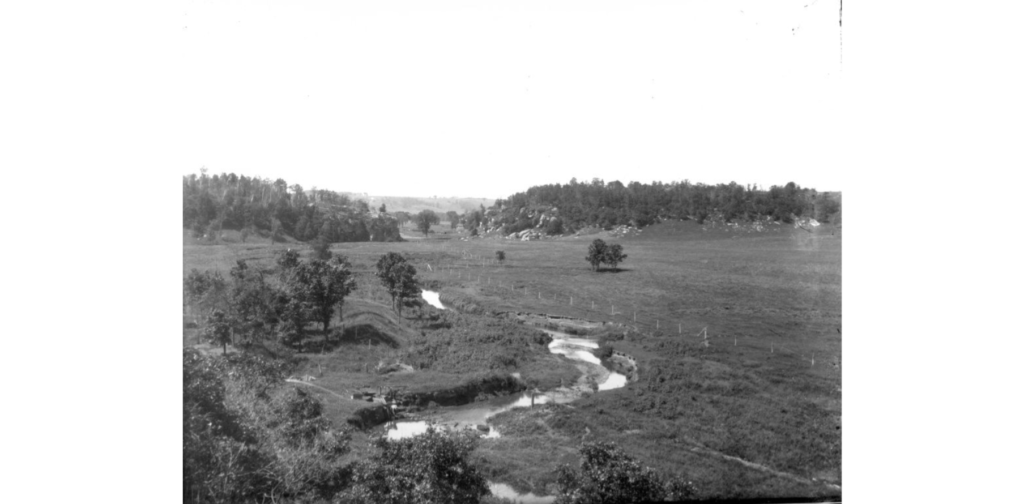
Farming and mining existed side by side in the lead region for many years. In this image, a miner has set up a wash place to “cradle” ore. The stream he uses flows through a pasture that has been fenced for cattle. A detail view of the miner’s operation is visible in the photo in this collection titled “Pasture and stream with miner, detail view.
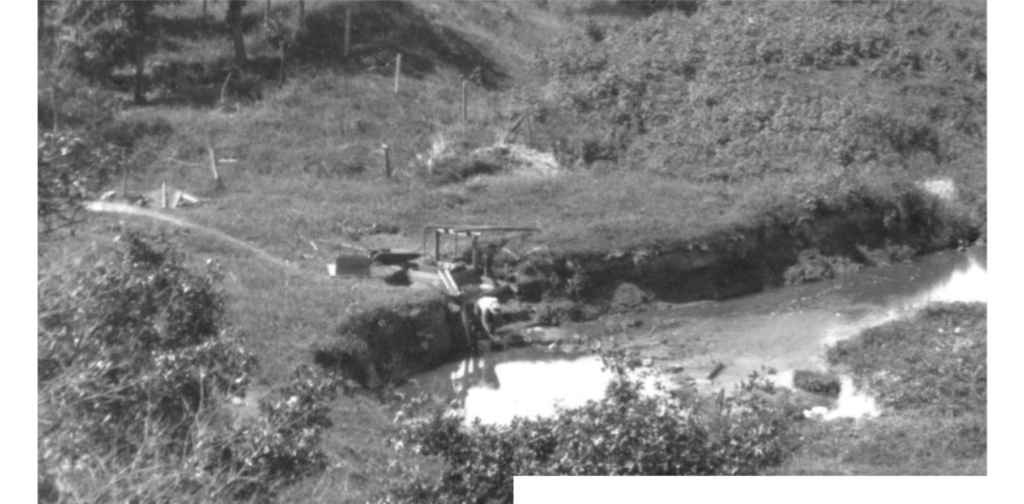
A miner washes ore in a stream with a “cradling” apparatus. From “A History of Mining in Iowa County” by Stanley T. Holland: “. . . wash places [were] built along the creeks. A forked post was set in the ground close to a dammed up pool in a creek. Then a long pole was mounted in the crotch of the forked post, and a slotted box was then mounted on the end of the pole, next to the pool. Then the lead was shoveled into the slotted box and the pole was shifted backwards and forwards in the post crotch to get the right balance, according to the load in the box. Then a man on the end of the pole would jiggle the box up and down in the the pool and dissolve the dirt to wash the lead, as no dirt was supposed to be on the lead. . . . It was hard work, but the only way they had to clean lead and process it before smelting.” The full view from which this image is taken is available in this collection under the title “Pasture and stream with miner, full view.”
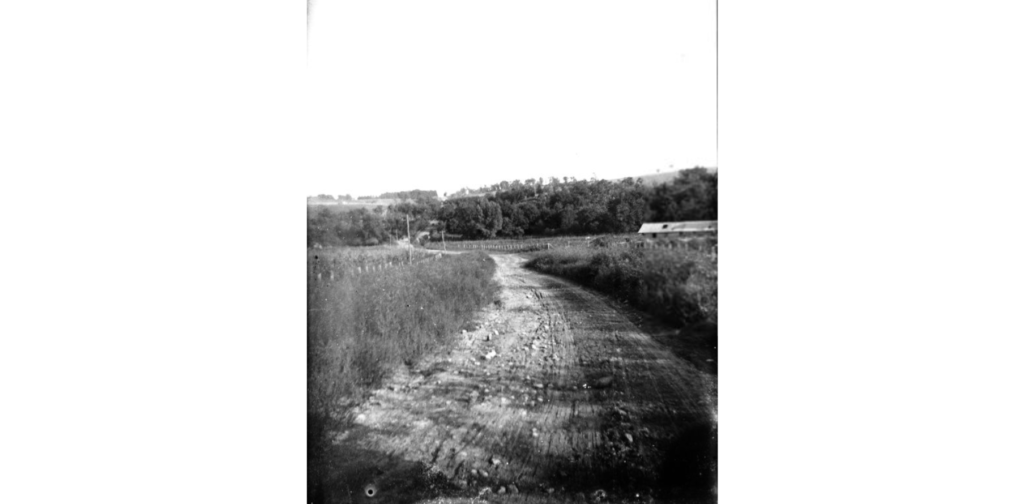
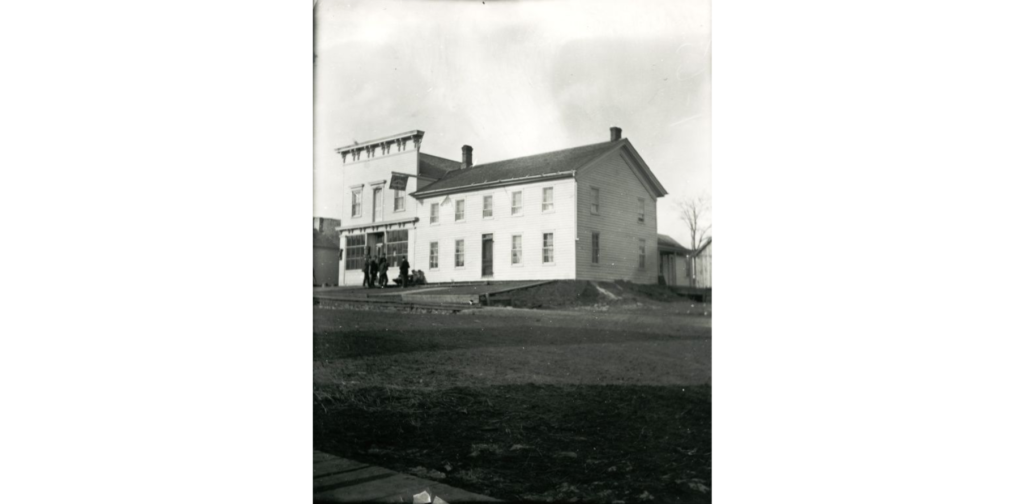
The sign hanging from the building says “Linden Hotel, Wm Pollard”. William Pollard was a hotel keeper in the village of Linden in 1880, according to the federal census of that year, and is referred to as such in the History of Iowa County, 1881.
Scan of a print made from a glass plate negative, from a collection found in Mineral Point and presumed to depict local scenes from 1880-1910.
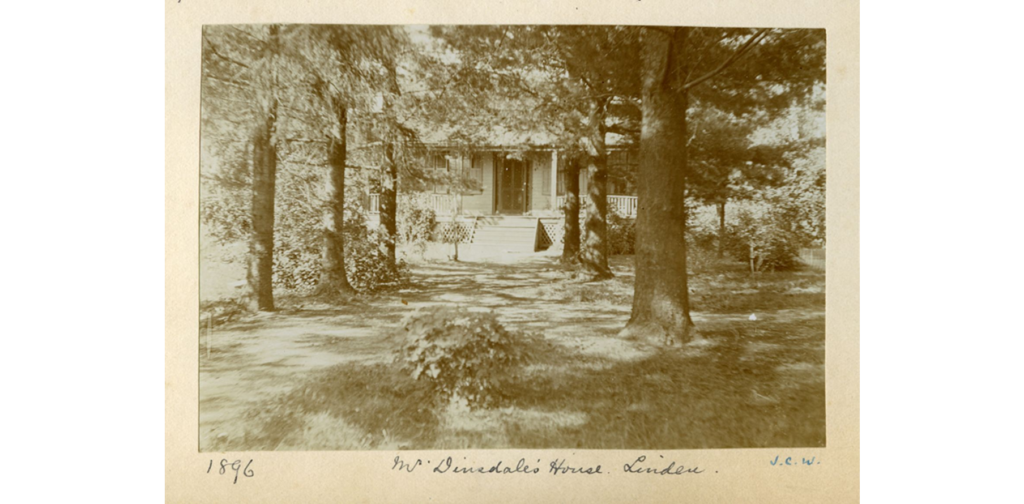
Rev. Matthew Dinsdale was born at Yorkshire, England in 1815, came to Wisconsin in 1844 and was a circuit rider for the Methodist Episcopal church, first in the lead mining district of Southwestern WIsconsin, then in the Lake Winnebago area. In 1849 he joined the Gold Rush to California. Two years later, he returned to England, and married Mary Anne Mann of York. Returning to America with his bride, he served in many pastorates in the southwestern part of the State, including Madison. When he retired from the active ministry, he spent his last years at Linden, Iowa county, where he died, in 1898.
Letters by Rev. Dinsdale detailing his life and adventures in Wisconsin and California are available online in the University of Wisconsin Digital Collections/ the State of Wisconsin Collection.



You must be logged in to post a comment.